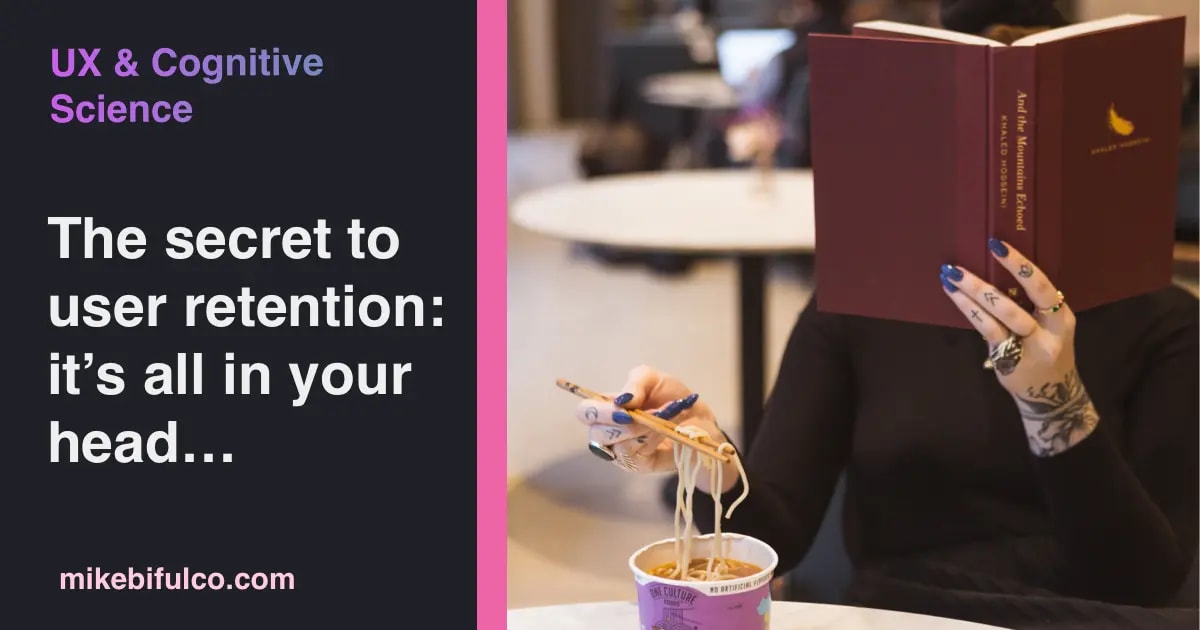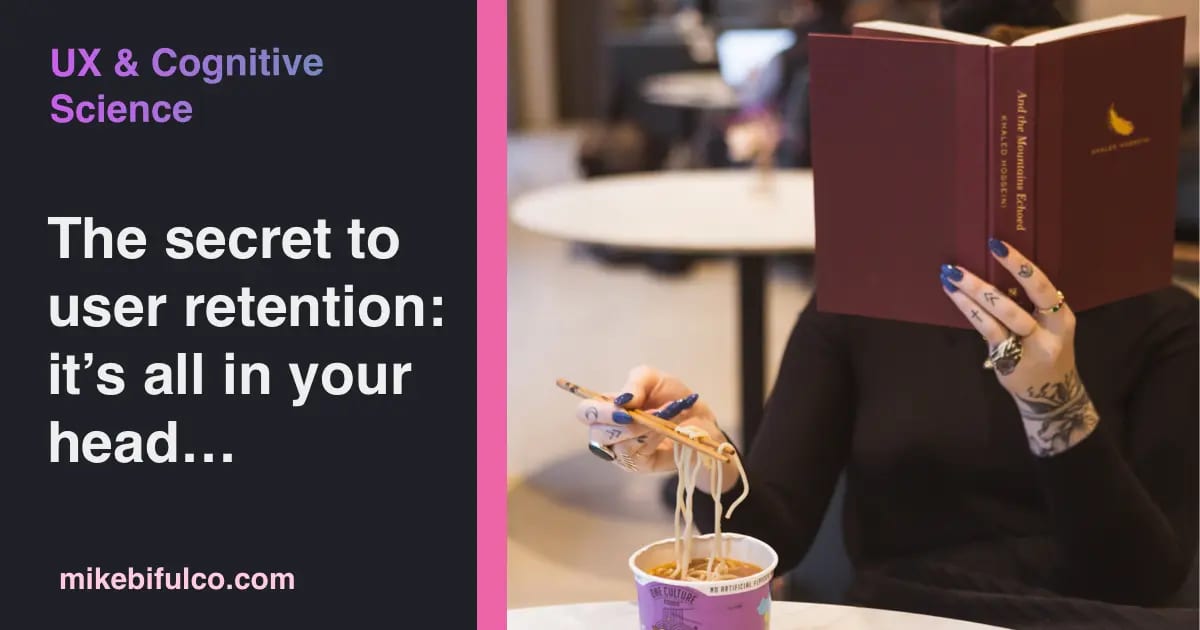Maximize user retention: the cognitive science approach...

If you want to build a great product that people love, making your thing work is not enough.
Truly great products provide value while building trust, loyalty, and enthusiasm. These is often accomplished through many small changes, by researching and observing the real behavior of people who use your apps.
I recently went down a rabbit hole reading about how we understand the behaviors tied to multitasking - and lemme tell ya, there is a ton of wisdom that can be derived from what we know about the subject.
Studies in human multitasking indicate that our brains have a very limited capacity to handle more than one task at a time. In fact, we're not really multitasking at all - we're just switching between tasks very quickly. This is called task switching. Despite this, many people find it motivating to have a lot of things going on at once. This is called continuous partial attention.
There are many pros and cons to this, for example:
- There's a fine line between being motivated and being overwhelmed
- The more tasks we have going on at once, the more likely we are to forget something
- Finishing tasks makes us feel good
Hopefully you can imagine how this would be useful in UX design. It underscores the necessity for simplicity and focus, where each step of the onboarding process should be distinct, self-contained, and not overload the user's cognitive bandwidth.
Moreover, another fascinating aspect of our cognitive psychology is the Zeigarnik effect: people remember uncompleted or interrupted tasks better than completed ones. By designing experiences that take advantage of this effect, we can motivate users to return to our products to complete important unfinished tasks.
For instance, we can strategically create breakpoints in the complex processes which leave users eager to come back and finish (i.e. complete three workouts by Sunday to see your weekly stats breakdown).
The bottom line
So, how can we use this information to build better products? Here are some practical tips:
-
Keep it simple. Don't overload your users with too much information at once. Break down complex tasks into smaller, more manageable ones. For example: split complex onboarding flows into multiple steps, each with a clear goal, and make it dead easy to come back to when someone inevitably gets interrupted.
-
Make it easy to come back. Ever used an app that requires a login every time you come back, even if you check the "remember me" box? I bet you can think of a couple examples off the top of your head. Do you love those services? Of course not.
-
Celebrate progress. Reward users for completing tasks by giving them a sense of accomplishment. One of the most well-loved features we built at my last company, smpl, was a celebration screen that popped up when coworking members finished creating their profile for the first time. A little shower of confetti onscreen was a simple, fun way to make people feel good about what they'd accomplished.
By learning to acknowledge and cater to the cognitive intricacies of human multitasking, you can create a user-friendly environment that respects and makes the most out of our attentional capacities.
More reading on multitasking and product design
Continuous partial attention
The Wikipedia article on multitasking has a section on continuous partial attention, which is a great place to dig in further. It provides a concise overview of the concept, its history, and its implications for product design.
The Zeigarnik effect
Ever have trouble sleeping because you didn't finish that one important thing you needed to do today? Zeigarnik, baby! There's a great article from the Harvard Business Review on The Zeigarnik effect that explains the phenomenon in detail. It also provides some practical tips on how it can be used as an advantage.
tl;dr: help your users feel like they're making progress, and break big tasks into smaller ones - they'll feel like they're making progress and be motivated for more.
Cognitive load theory
As I shared a couple weeks ago, Cognitive load is a theory that describes how our brains process information. It's a great way to understand how to design products that are easy to use and understand.
For my API building friends in the back
Lots of new goodness from my beloved developer community APIs You Won't Hate this week!
-
🎙️ In the latest episode of the podcast, Creating world-class API devX with Sagar Batchu from Speakeasy, I talk to founder Sagar Batchu about how he's building a platform to help API developers create better experiences for their users.
-
🚥 My pal and cofounder Phil Sturgeon wrote a great article called How to Capture Quite a Lot of API Traffic, in which he shares a great tactic for capturing API traffic for testing and documentation purposes.
-
📰 Can't get enough newsletters? APIs You Won't Hate's newsletter goes out twice a month, on the 1st and 15th. Check out the latest issue, Death by Google.
Also, it is a holiday
As a side note, happy 4th of July to my American friends. If you're like me, you may be finding it impossible to be proud of the direction our country is headed.
Do me a favor, and stay mad about it.
Make sure all your friends vote, this year and every year.
We need to do better. ✊🏽

